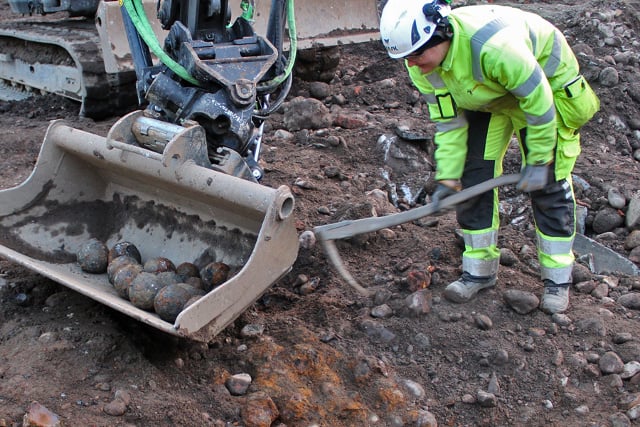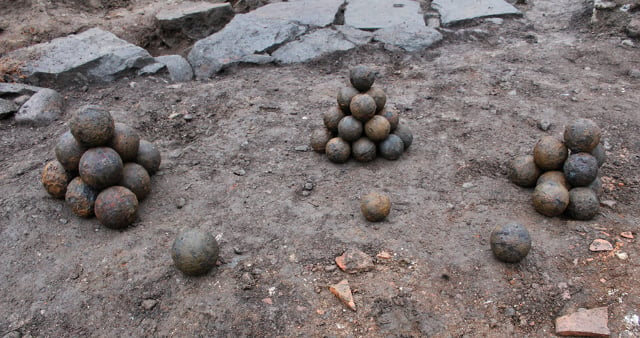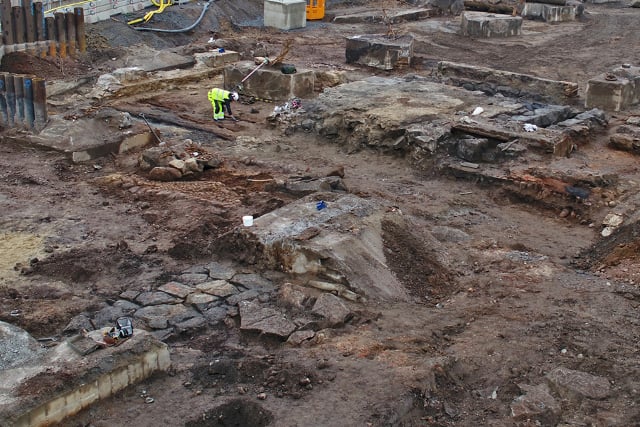A proposal to redevelop Stockholm's Slussen junction was approved in 2013, and since then archaeologists have been excavating the area as the construction work continues. It is the largest such excavation in Sweden and tells the story of a time when the area was the hub of Stockholm's iron trade.
Last month they uncovered more than 200 cannonballs in what used to be a moat.
“This is a unique find. I don't know, off the top of my head, of any other place in Sweden where so many cannonballs have been found in one place and there has definitely not been a similar find in Stockholm before,” Michel Carlsson, archaeologist at Arkeologikonsult, told The Local on Tuesday.
READ ALSO: Eight-year-old Swedish-American girl pulls pre-Viking era sword from lake

Some of the cannonballs found in November. Photo: Arkeologikonsult
They believe the cannonballs were dumped on the site intentionally, either during the demilitarization of Slussen's fortifications in the early 17th century (when the military defences moved as the city grew) or when the city's facilities for weighing iron were moved to the site from the Old Town in the 1660s.
“One question we are considering and have not yet found the answer to is why the cannonballs were not saved – if nothing else than for the sake of the metal value,” said Carlsson.
WATCH: New video of shipwrecks in Stockholm's archipelago

More than 200 cannonballs have so far been found. Photo: Arkeologikonsult
The cannonballs that have so far been found vary in size and originally weighed around 0.85 to 8.5 kilo. Grenades, hand grenades and parts of at least seven cannon were also found on the site in November.
In the 1640s Sweden exported around 11,000 tonnes of wrought iron annually, increasing to 40,000 tonnes in the 1740s. Other finds last month include shards of German ceramics from the 14th century, remains of a well-known arch bridge built in the mid 18th-century and more wrought iron objects.

One of the cannons found on the site. Photo: Arkeologikonsult
Exciting finds in central Stockholm are nothing new. During previous digging work at Slussen archaeologists have found a 16th century kitchen complete with tobacco pipes, coins, Viking era pearls, and much more.
Construction work at Slussen is expected to be finished in 2025. The existing junction was built in 1935, but there have been various locks on the site since the 1600s, raising and lowering the water level to help transport boats between Lake Mälaren and the Baltic Sea. The word sluss means 'lock' in Swedish.
READ ALSO: Swedish king's 'forgotten' warship found in central Stockholm

Remains of an arch bridge that used to run east of the locks in the mid-18th century. Photo: Arkeologikonsult



 Please whitelist us to continue reading.
Please whitelist us to continue reading.
Member comments